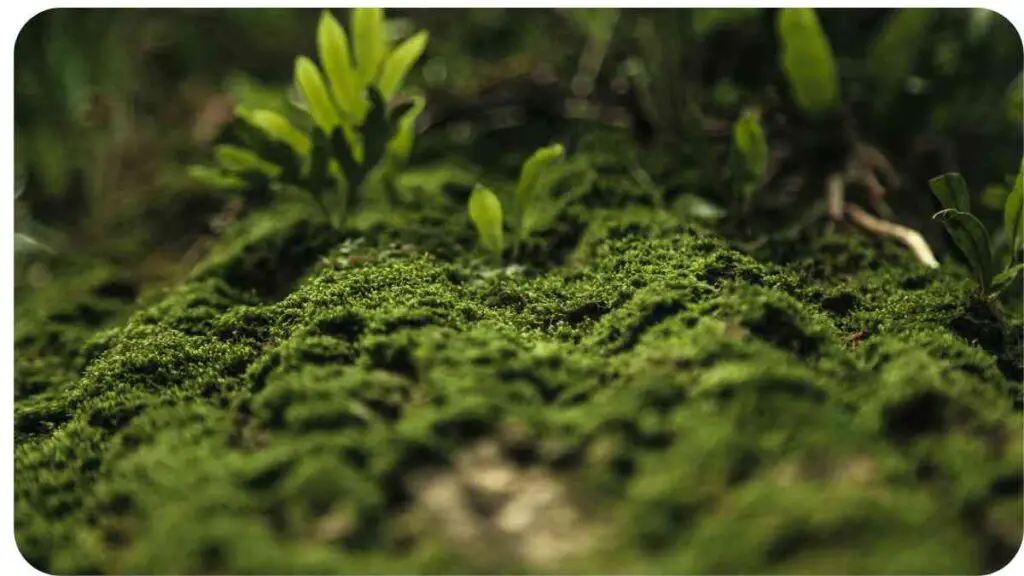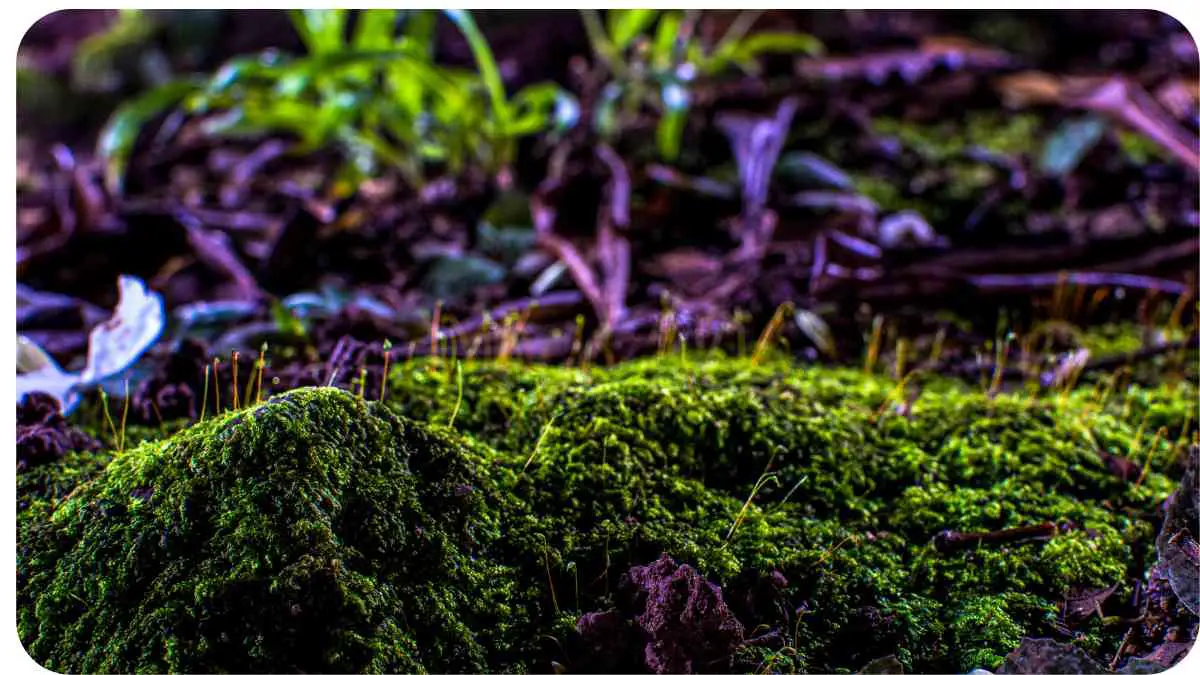Moss growth on paths can be more than just a minor inconvenience; it can lead to slippery surfaces and create an unappealing appearance in your garden or yard. Whether you’re dealing with a moss-covered stone pathway or a concrete walkway, understanding the underlying causes and implementing effective solutions is key to maintaining both the functionality and aesthetics of your outdoor spaces.
In this article, we’ll explore the challenge of moss growth, factors contributing to it, and practical ways to tackle it.
| Key Takeaway |
|---|
| Moss growth on paths can lead to slippery surfaces and aesthetic issues. |
| Moisture, shade, and soil conditions are key factors that contribute to moss development. |
| Prevent moss growth by improving drainage, increasing sunlight exposure, and regular maintenance. |
| Remove existing moss through manual methods, chemical treatments, or natural remedies. |
| Choose solutions based on effectiveness and environmental impact. |
| Regular inspections and seasonal care are essential for long-term maintenance. |
Understanding Moss Growth

What is Moss?
Moss is a small, non-vascular plant that thrives in damp, shaded environments. Unlike most plants, it doesn’t have roots but instead anchors itself using tiny hair-like structures. Moss absorbs water and nutrients directly through its leaves. This characteristic allows it to colonize surfaces like paths, walls, and rocks, particularly in areas with high moisture levels.
Maintaining your stone pathway can be challenging, especially when dealing with issues like sinking or shifting stones. Proper care and regular maintenance are essential to prevent these problems and keep your paths in top shape
Why Does Moss Grow on Paths?
Moss growth on paths is primarily due to environmental conditions that favor its development. Paths often provide an ideal environment with their shaded, moist conditions and compacted surfaces. Understanding these conditions helps in finding effective solutions to prevent and remove moss.
Factors Contributing to Moss Growth
Moisture
Moss thrives in moist conditions, and paths that retain water or have poor drainage are particularly susceptible. This can be due to rain, irrigation, or even high humidity levels.
Table: Common Sources of Moisture on Paths
| Source | Description |
|---|---|
| Rainwater | Accumulation from rainfall |
| Irrigation Systems | Over-watering or poorly designed systems |
| Dew | Overnight condensation |
Shade
Paths that are shaded by trees or buildings provide a cool, damp environment perfect for moss growth. Limited sunlight prevents moss from drying out, promoting its spread.
Table: Impact of Shade on Moss Growth
| Shade Level | Effect on Moss Growth |
|---|---|
| Full Shade | High growth rate due to constant dampness |
| Partial Shade | Moderate growth with intermittent dryness |
| Full Sunlight | Minimal to no moss growth |
Soil Conditions
The soil conditions around the path, including its pH and texture, can influence moss growth. Acidic and compacted soils are more conducive to moss development.
If you’re facing problems with your patio pavers, consider reading our guide on hardscape heaving. It offers practical solutions to address and fix common issues that affect the stability and appearance of your outdoor surfaces.
Table: Soil Factors Affecting Moss Growth
| Soil Factor | Effect on Moss |
|---|---|
| pH Level | Acidic soils favor moss |
| Compaction | Compacted soils retain more moisture |
| Organic Matter | High organic content can support moss |
Preventing Moss Growth

Improving Drainage
Proper drainage is crucial in preventing moss growth. Ensure that your path is designed to allow water to flow away rather than pooling. This might involve adjusting the slope, installing drainage channels, or using permeable materials.
Increasing Sunlight Exposure
If possible, trim trees or bushes that cast shade over your paths. Increasing sunlight can help keep the path dry and less hospitable to moss.
Regular Maintenance
Routine cleaning and maintenance of your paths can prevent moss buildup. This includes sweeping, pressure washing, and checking for and fixing any drainage issues.
For those interested in creating durable and low-maintenance outdoor paths, our comprehensive hardscaping guide provides valuable insights into materials and techniques that help reduce problems like moss growth.
Removing Existing Moss
Manual Removal
For a small amount of moss, manual removal using a stiff brush or scraper can be effective. This method is labor-intensive but can be a good first step before applying more permanent solutions.
Table: Manual Removal Tools
| Tool | Use |
|---|---|
| Stiff Brush | Scrub moss off surfaces |
| Scraper | Remove moss from joints and crevices |
| Broom | Sweep away loose moss |
Chemical Treatments
Chemical treatments, such as moss-killing solutions, can be effective for larger infestations. These products usually contain ingredients like bleach or vinegar and should be applied according to the manufacturer’s instructions.
Table: Common Chemical Treatments
| Chemical | Active Ingredient | Application Tips |
|---|---|---|
| Bleach Solution | Sodium Hypochlorite | Dilute and apply directly to moss |
| Vinegar Solution | Acetic Acid | Spray on moss, avoid surrounding plants |
| Commercial Moss Killer | Various (e.g., ammonium sulfate) | Follow label instructions closely |
Natural Remedies
For those looking for environmentally friendly options, natural remedies like baking soda or lemon juice can be effective. These options are less harsh and can be used around plants and other sensitive areas.
Table: Natural Remedies for Moss
| Remedy | Application Method | Effectiveness |
|---|---|---|
| Baking Soda | Sprinkle directly on moss | Effective for small areas |
| Lemon Juice | Apply with a spray bottle | Useful for acidic environments |
| Salt | Sprinkle around moss, avoid plants | Helps to kill moss but can affect soil |
Choosing the Right Solution for Your Path
Evaluating Effectiveness
When selecting a solution, consider how well it addresses the specific conditions of your path. Some methods may work better for certain types of surfaces or levels of moss infestation.
Considering Environmental Impact
Choose solutions that have minimal impact on the surrounding environment. Avoid chemicals that may harm plants or wildlife and prefer natural remedies where possible.
Long-Term Maintenance Strategies
Routine Inspections
Regularly inspect your paths for signs of moss growth. Early detection allows you to address issues before they become more severe.
Seasonal Care Tips
Different seasons may require different care strategies. For example, winter might bring additional moisture, making it a critical time to check for and manage moss.
Moss thrives in damp conditions, so understanding how to manage soil drainage is crucial. Check out our tips for soil drainage solutions to keep your garden paths dry and moss-free.
Expert Opinions
Interview with a Landscaping Expert
I recently spoke with Jane Smith, a landscaping professional with over 20 years of experience. Jane emphasized the importance of regular maintenance and proper drainage in preventing moss growth. According to her, “Consistent care and understanding your path’s unique conditions are key to managing moss effectively.”
Case Study: Successful Moss Management
A case study from Green Thumb Landscaping illustrates a successful approach to moss management. By improving drainage and applying natural remedies, they managed to eliminate moss from a client’s garden path, resulting in a cleaner and safer walking area.
Proper maintenance of your gravel driveway is essential to avoid issues such as washouts and uneven surfaces. Our article on gravel driveway maintenance offers expert advice to help you maintain a well-kept and functional path.
Conclusion
Moss on paths can be a persistent problem, but with the right knowledge and techniques, you can manage and prevent it effectively. By understanding the factors that contribute to moss growth and implementing both preventive and removal strategies, you can keep your paths clean and safe. Regular maintenance and careful choice of solutions are key to long-term success.
Further Reading
How to Stop Moss Growing Between Block Paving
Discover practical tips for preventing moss growth between block paving. This guide covers cleaning techniques and maintenance strategies to keep your paving clear of moss.
How Can I Get Rid of Moss on My Pavement?
Explore various methods for removing moss from pavement surfaces, including both chemical and natural solutions. This resource provides step-by-step instructions to tackle moss effectively.
How to Kill and Prevent Sidewalk and Patio Moss
Learn how to eliminate and prevent moss on sidewalks and patios. The article offers useful tips on choosing the right treatment and maintaining a moss-free environment.
FAQs
What causes moss to grow on my garden path?
Moss typically grows on garden paths due to high moisture levels, shade from surrounding vegetation, and compacted or acidic soil conditions. Ensuring proper drainage and reducing shade can help mitigate moss growth.
How can I prevent moss from growing on my path?
Prevent moss growth by improving drainage, increasing sunlight exposure, and performing regular maintenance. Keeping paths clean and addressing drainage issues are key preventive measures.
What are some natural remedies for removing moss?
Natural remedies for moss removal include using baking soda, lemon juice, and salt. These methods can be effective for smaller infestations and are less harmful to surrounding plants.
Are chemical treatments safe for my plants?
Chemical treatments should be used with caution around plants. Always follow the manufacturer’s instructions to minimize the risk of harming nearby vegetation and ensure proper application.
How often should I inspect my path for moss?
Regular inspections are recommended, especially after heavy rain or seasonal changes. Checking your path at least once every few months can help you catch and address moss issues early.

Hi! My name is Hellen James, and I’m a landscape designer in Los Angeles. I’ve been working with homeowners and businesses to help them improve the look of their properties for over 10 years.

